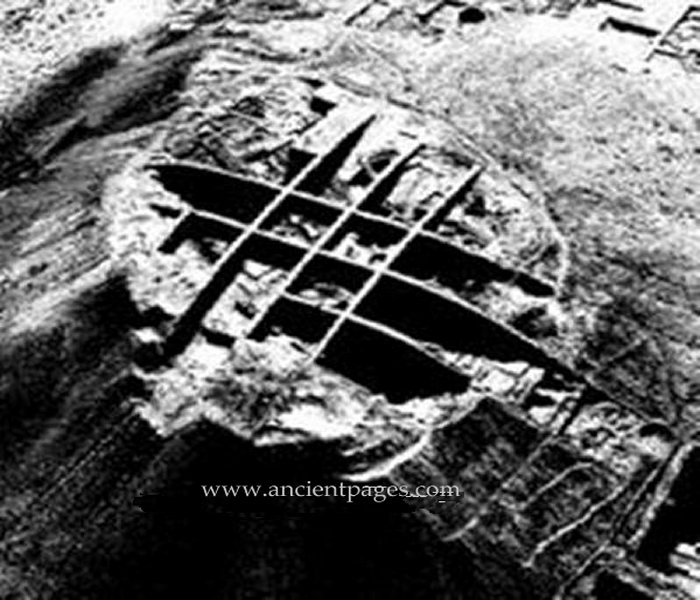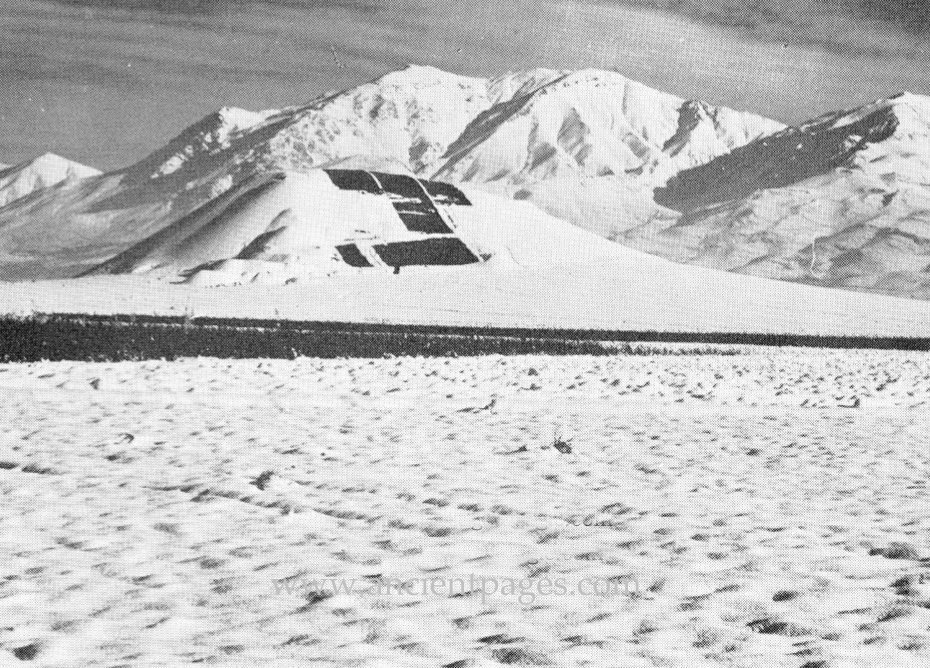Norsuntepe – Little-Known Mysterious Prehistoric Site In Anatolia, Turkey: Why Was It Abandoned And Destroyed By Fire?
A. Sutherland - AncientPages.com - Norsuntepe is located in the Keban area (modern eastern Turkey) on the Upper Euphrates, about 25 km from Elazig.
The crown of the hill had an area of approximately 500 m to 300 m, within which settlement traces were detectable by archaeologists.
Excavations at Norsuntepe were conducted between 1968 and 1974 by the German Archaeological Institute archaeologists led by Harald Hauptmann, the Heidelberg professor of Prehistory and Early History.
The field works had to be finished by 1974 because of the construction of the Keban Dam works and the rising water level.
In the excavations of Norsuntepe, archaeologists conducted investigations on the extractive metallurgy of copper, arsenic, and a lustrous gray metalloid found in nature and known as antimony.
They also analyzed excavated smelting products from Norsuntepe (Keban) area on the Upper Euphrates.
In Anatolia, most artifacts of a late Chalcolithic date were made of unalloyed copper. Some others were arsenical coppers with low arsenic content.
At Norsuntepe (a site now under the waters of Keban dam), smelting furnaces, copper ore, slag, fragments of clay crucibles or molds, and finished metal artifacts were found in the courtyards and buildings probably belonging to metal workers.
Norsuntepe was probably a fortified site, with mudbrick houses finished with plaster, and in some instances, they had wall paintings.
Archaeologists identified 40 settlement layers from different periods, namely the late Chalcolithic (4,000- 3,000 BC), through all phases of the Bronze Age until an Urartian settlement in the Iron Age.
Norsuntepe was one of the most important sites of this period.
The Chalcolithic (sometimes referred to as the 'Copper Age') was an important period with achievements, of which the most striking development was the extensive use of copper.
Until this period, natural stones were the only material humankind used to make their weapons.
Later, they learned to process and shape this metal copper to make solid weapons and ornamentation. We also see a considerable increase in the number of towns scattered across the area.
The new towns of this period were usually built on the water or in rich valleys.
The great mother goddess of Asia Minor was the main deity, and they made many figurines of this goddess, which they used in their religious rituals. The burials within the houses of the preceding Neolithic period now occur outside the towns.
After the Iron Age, which supplied several richly furnished graves, the settlement was abandoned and destroyed by fire.
Written by – A. Sutherland AncientPages.com Staff Writer
Updated on October 10, 2022
Copyright © AncientPages.com All rights reserved. This material may not be published, broadcast, rewritten or redistributed in whole or part without the express written permission of AncientPages.com
Expand for referencesReferences:
Rothman Mitchell S. Tepe Gawra: The Evolution of a Small, Prehistoric Center in Northern
More From Ancient Pages
-
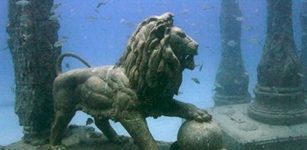 Stunning Underwater Photos Reveal Secrets Of Legendary Lost City Of Heracleion
Featured Stories | May 4, 2013
Stunning Underwater Photos Reveal Secrets Of Legendary Lost City Of Heracleion
Featured Stories | May 4, 2013 -
 Abduction Of Idun, Goddess-Keeper Of Golden Juvenile Apples In Norse Mythology
Featured Stories | Nov 16, 2019
Abduction Of Idun, Goddess-Keeper Of Golden Juvenile Apples In Norse Mythology
Featured Stories | Nov 16, 2019 -
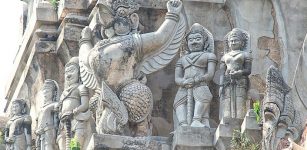 Sacred Bird Garuda And Stealing Of Amrita Drink Of Immortality From The Gods
Featured Stories | Jun 5, 2019
Sacred Bird Garuda And Stealing Of Amrita Drink Of Immortality From The Gods
Featured Stories | Jun 5, 2019 -
 Mystery Of The Lost Underground City Of The Grand Canyon
Featured Stories | Nov 19, 2014
Mystery Of The Lost Underground City Of The Grand Canyon
Featured Stories | Nov 19, 2014 -
 47,000 Years Of Aboriginal Heritage Was Destroyed In Mining Blast – Results From Juukan Gorge Show
Featured Stories | Jul 22, 2024
47,000 Years Of Aboriginal Heritage Was Destroyed In Mining Blast – Results From Juukan Gorge Show
Featured Stories | Jul 22, 2024 -
 Did Ancient Civilizations Possess Knowledge Of Time Travel?
Ancient Technology | Sep 17, 2018
Did Ancient Civilizations Possess Knowledge Of Time Travel?
Ancient Technology | Sep 17, 2018 -
 On This Day In History: Albertus Magnus – Medieval Person Of Great Historical Importance Died – On Nov 15, 1280
News | Nov 15, 2016
On This Day In History: Albertus Magnus – Medieval Person Of Great Historical Importance Died – On Nov 15, 1280
News | Nov 15, 2016 -
 Remnants Of A Royal Rest House That Served As A Temporary Residence For Pharaoh Thutmose III
Archaeology | May 9, 2024
Remnants Of A Royal Rest House That Served As A Temporary Residence For Pharaoh Thutmose III
Archaeology | May 9, 2024 -
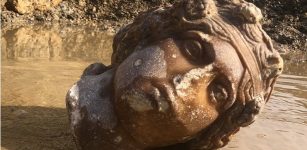 Statue Heads Of Dionysus And Aphrodite Discovered In The Ancient City Of Aizanoi
Archaeology | Dec 12, 2023
Statue Heads Of Dionysus And Aphrodite Discovered In The Ancient City Of Aizanoi
Archaeology | Dec 12, 2023 -
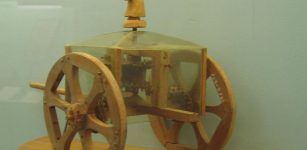 Remarkable South-Pointing Chariot – Ancient Cybernetic Machine Invented 1,700 Years Ago Is An Engineering Masterpiece
Ancient Technology | Jul 17, 2014
Remarkable South-Pointing Chariot – Ancient Cybernetic Machine Invented 1,700 Years Ago Is An Engineering Masterpiece
Ancient Technology | Jul 17, 2014 -
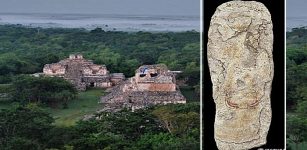 A Painted Vault Lid Discovered In Royal Palace Of Ek’ Balam Will Shed Light On History Of The Acropolis Of Ek’
Archaeology | Sep 16, 2023
A Painted Vault Lid Discovered In Royal Palace Of Ek’ Balam Will Shed Light On History Of The Acropolis Of Ek’
Archaeology | Sep 16, 2023 -
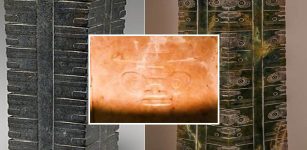 Mysterious Ancient Figure Depicted On A Jade Cong May Re-Write History Of China
Artifacts | Oct 11, 2019
Mysterious Ancient Figure Depicted On A Jade Cong May Re-Write History Of China
Artifacts | Oct 11, 2019 -
 Ancient Suda: Massive Anonymous Byzantine-Greek Lexicon Dated To 10th Century
Featured Stories | Nov 6, 2018
Ancient Suda: Massive Anonymous Byzantine-Greek Lexicon Dated To 10th Century
Featured Stories | Nov 6, 2018 -
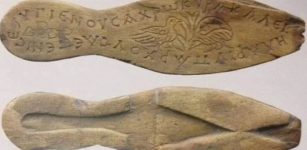 Byzantine Sandals With A Nice Message Found In The Harbor Of Eleutherios (Theodosius) – Now On Display
Artifacts | Apr 12, 2023
Byzantine Sandals With A Nice Message Found In The Harbor Of Eleutherios (Theodosius) – Now On Display
Artifacts | Apr 12, 2023 -
 Mysteries Of The Yellow Emperor – The ‘Son Of Heaven’ From Regulus
Chinese Mythology | Oct 10, 2021
Mysteries Of The Yellow Emperor – The ‘Son Of Heaven’ From Regulus
Chinese Mythology | Oct 10, 2021 -
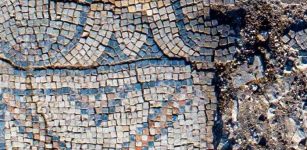 Beautiful Mosaics In 1,300-Year-Old Church Discovered In The Lower Galilee
Archaeology | Aug 29, 2020
Beautiful Mosaics In 1,300-Year-Old Church Discovered In The Lower Galilee
Archaeology | Aug 29, 2020 -
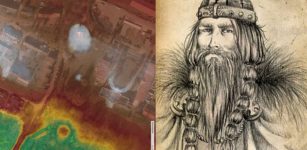 Long-Lost Burial Site Of Viking King Harald Bluetooth Discovered By Satellites?
Archaeology | Jun 29, 2022
Long-Lost Burial Site Of Viking King Harald Bluetooth Discovered By Satellites?
Archaeology | Jun 29, 2022 -
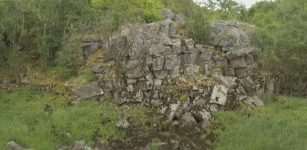 Unique Bronze Age Fortress Discovered In Galway, Ireland
Archaeology | Jun 25, 2022
Unique Bronze Age Fortress Discovered In Galway, Ireland
Archaeology | Jun 25, 2022 -
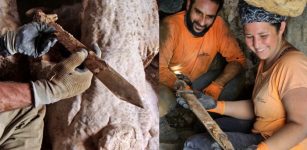 Four Rare And Incredibly Well-Preserved 1,900-Year-Old Roman Swords Found In Judean Desert
Archaeology | Sep 6, 2023
Four Rare And Incredibly Well-Preserved 1,900-Year-Old Roman Swords Found In Judean Desert
Archaeology | Sep 6, 2023 -
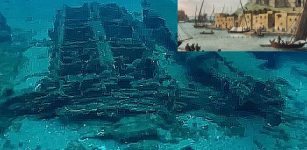 Ancient Roman Port Discovered Off The Syrian Coast
News | Feb 16, 2021
Ancient Roman Port Discovered Off The Syrian Coast
News | Feb 16, 2021

